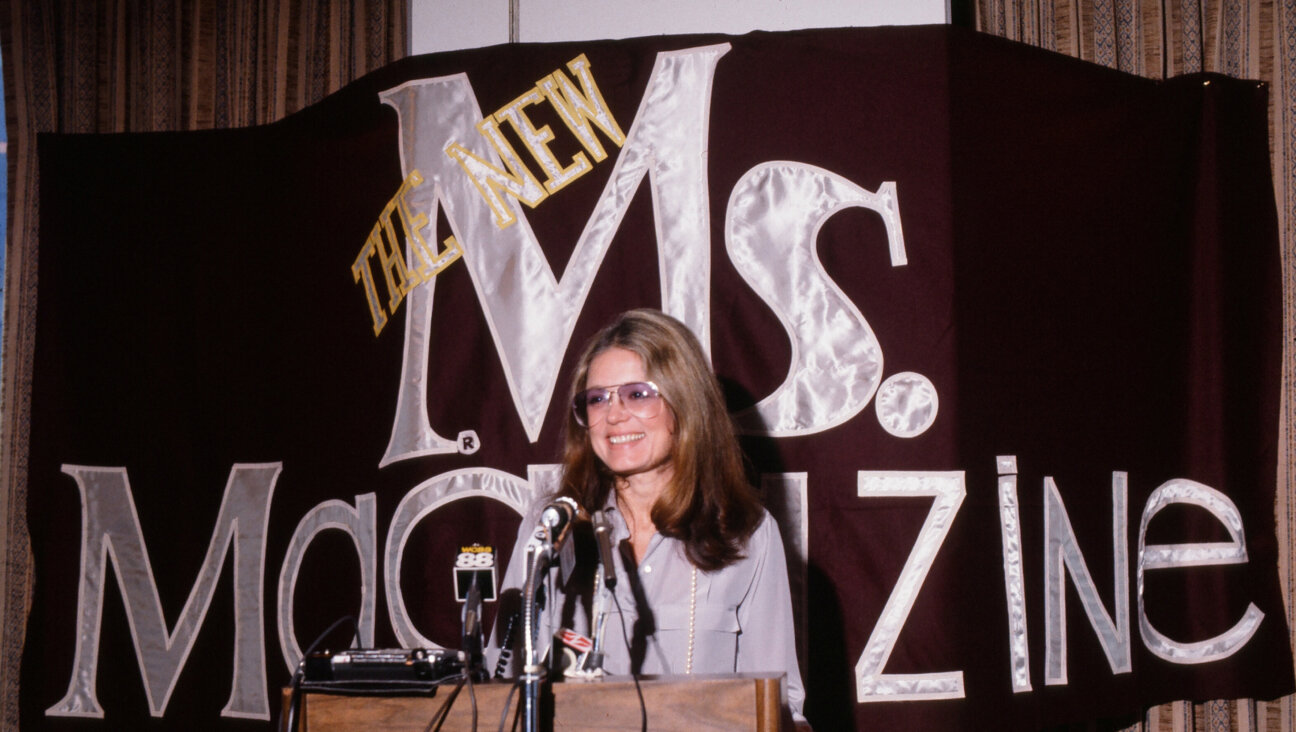What’s Wrong With ‘Schindler’s List?’ Kind Of A Lot

Embeth Davidtz, Steven Spielberg, Liam Neeson, Sir Ben Kingsley and Caroline Goodall attend the ‘Schindler’s List’ 25th Anniversary Cast Reunion – 2018 Tribeca Film Festival. Image by Getty Images/Theo Wargo/Staff
Now that “Schindler’s List,” Steven Spielberg’s Oscar-winning 1993 film, is being rereleased 25 years after its premiere and nearly two months after the deadliest anti-Semitic attack in US history, it’s probably time to revisit the second opinions.
At the time of the film’s initial release, detractors in the Jewish community were many. So many in fact that this piece risks turning into a bibliography. It’s only natural that the film, which Spielberg submitted to Cal State Long Beach as his thesis some 30+ years after matriculating, has received breathless academic attention.
In Miriam Bratu Hansen’s essay for Critical Inquiry “‘Schindler’s List’ Is Not ‘Shoah’” she details the rejection of the film by critical intellectuals including Art Spiegelman (“there weren’t any Jews in the picture”), Phillip Gourevitch (“‘Schindler’s List’ depicts the Nazis’ slaughter of Polish Jewry almost entirely through German eyes.”), Leon Wieseltier (“hale and self-regarding”) and “Shoah” documentarian Claude Lanzmann (more on him later). While Hansen ultimately rejects the premise that “Schindler’s List” can please everyone, the encyclopedia-like mass of her citations indicates that it probably should have pleased more.
One potentially apocryphal story speaks to a number of objections. A rabbinical looking gentleman was reported to have said. “Think that was about the Holocaust? That was about success, wasn’t it? The Holocaust is about 6 million people who get killed. ‘Schindler’s List’ was about 600 people who don’t.” The gentleman in question: Stanley Kubrick.
Very often, film treatments of the Holocaust, that don’t strive for the legendary length or documentary fastidiousness of “Shoah” end up focusing on lucky or singular victims. Because the most common stories of the Holocaust are lacking in uplift and propulsive narrative, nearly every dramatization follows the exceptions to the rule of genocide.
“Sophie’s Choice” follows an uncommon victim: a Catholic woman survivor. The protagonist of “Son of Saul” is not a typical inmate, but a sonderkommando trying to give a child burial rites. One can understand why Spielberg, riffing on Thomas Keneally’s novel would elect to tell the story of the Holocaust in a cinematic way. “Shoah” after all, already existed.
But what is inexcusable to many critics is not that Spielberg opted to tell a story of fortunate survivors, but that he chose a noble gentile as a protagonist.
In a 2011 ranking of Jewish films for Tablet, Liel Leibovitz puts “Schindler’s List” dead last, arguing “the fact that the movie, really, is about a Christ-like gentile who saves a horde of hapless Jews who have no agency or resolve of their own… makes ‘Schindler’s List’ not just one of the most ham-handed Holocaust films ever made but also, peculiarly, one of the least Jewish in sensibility.”
It is notable that, unlike William Styron or Keneally, Spielberg is a Jew. Which is why many Jewish critics have wondered why the film seems to pander to Christians with much of its imagery. One can reasonably argue that any popular filmmaker is directing for a Christian audience. But in giving them a man who is Righteous Among Nations, Spielberg may be letting them off easy, holding forth an extraordinary man at the expense of millions of others who did nothing.
The knottier question, that Hansen’s essay seeks to address is whether any representation of the Shoah can ever be justified or if it does and should resist any form of re-creation.
In “Why Spielberg Has Distorted the Truth,” Lanzmann accuses Spielberg of “fabrication” and writes that the Holocaust is “unique in that it erects a ring of fire around itself, a borderline that cannot be crossed because there is a certain ultimate degree of horror that cannot be transmitted. To claim it is possible to do so is to be guilty of the most serious transgression.”
In Lanzmann’s eyes, Spielberg was guilty for even trying, though the latter director never made a claim for anything definitive. He couldn’t. No one, not even Lanzmann could.
Whether the Holocaust is off limits for re-creation is not a question that can be easily answered, but “Schindler’s List” does do us the service of providing the most popular attempt. By rereleasing the film to theaters New Line is giving audiences across the United States another chance to evaluate the film. It’s now self-evident to any Jewish audience that is paying attention that we shouldn’t hold out hope for a gentile savior. What’s more, we can’t rely on any one piece of art to heal our country or tell our whole story. We must manage our expectations.
PJ Grisar is the Forward’s culture intern. He can be reached at [email protected].
























